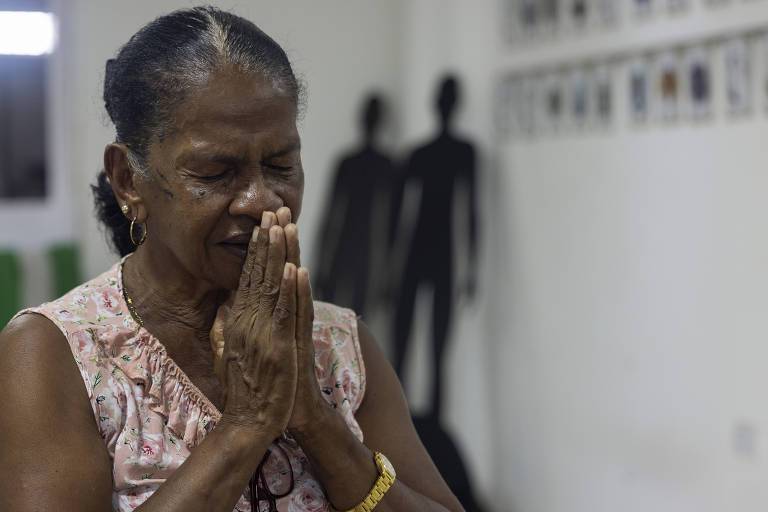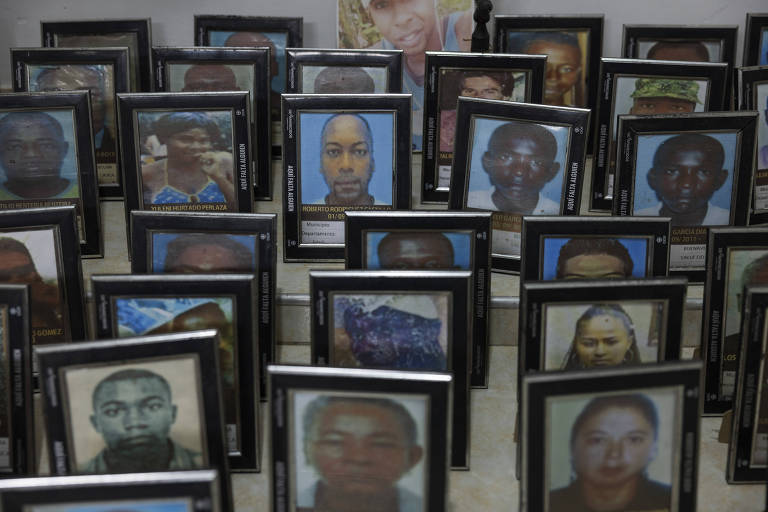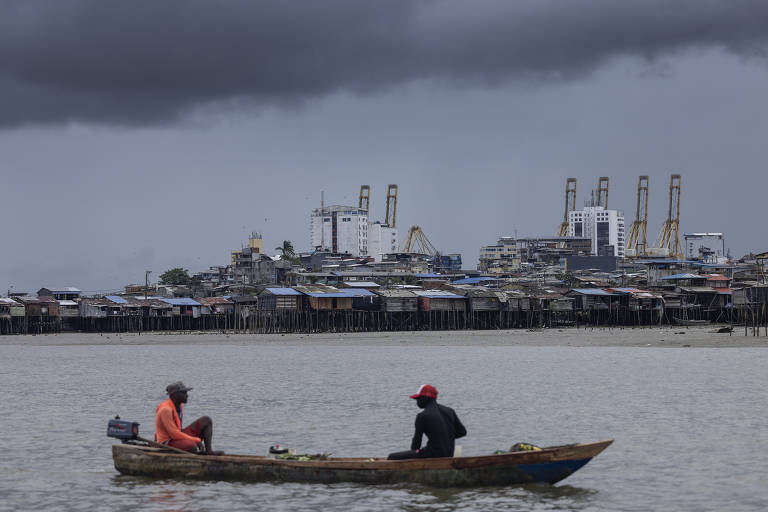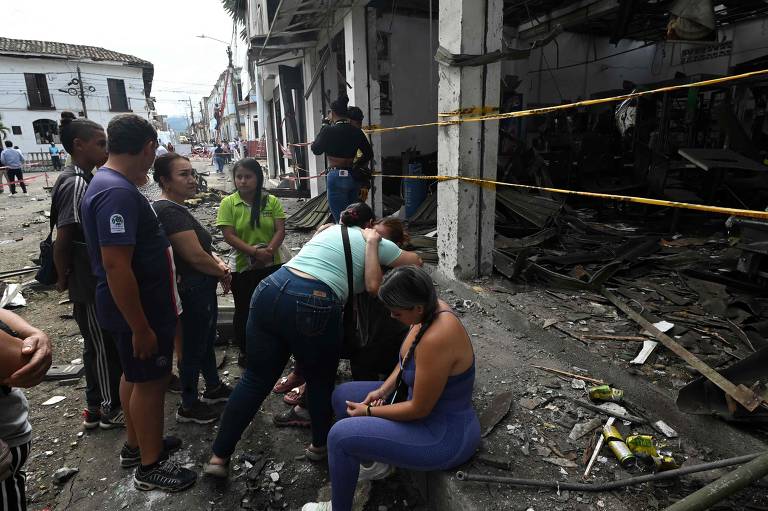Colombians live a difficult time searching for more than 200,000 missing people

BUENAVENTURA (VALLE DEL CAUCA, COLOMBIA)
Buenaventura is a port city on Colombia 's Pacific coast, like many others in South America . The seawater is cold. Lunch is accompanied by excellent seafood. The vast majority of the population is Black.
The wealth of goods arriving at the country's largest port isn't retained there. Instead, it evaporates, just like the young population that, to escape poverty and urban insecurity, heads to the nearest big city: Cali, the land of salsa.
The city's violent climate has wreaked havoc on its population of 430,000. From a town with generations of fishing families, Buenaventura has become a place where stories of murder and disappearances fill the homes, many of which are built on stilts.

It's hard to find someone who hasn't lost at least one family member or friend, a symptom of a nationwide pain. Official figures show that at least 127,000 people have been missing in Colombia since the 1980s. But the real number, according to authorities and statistical projections, exceeds 200,000.
These are stories intertwined with the armed conflicts that permeated the country for more than six decades and have not completely subsided, even after the historic peace agreement in 2016 .
The disappearances are blamed on guerrilla groups like the FARC, paramilitaries, and the state itself—a complicated calculation that doesn't allow for a single culprit. They're also blamed on urban gangs, some of them created after the demobilization of guerrillas and militiamen. Buenaventura is a disputed territory between the Shottas and the Espartanos. In between, the population.
The sea surrounding the city has never been a friend to Edilma Castro, 70. The intense Pacific waves, which no longer pleased the Colombian, took on a mourning tone in 2007, when her son, Alex Mauricio, a 22-year-old business administration student, disappeared. Edilma says she believes his body is in the sea. "Since that year, my torture began. This sea is a cemetery."
Alex's whereabouts remain unknown for nearly 20 years. One day, Edilma's son received a phone call and had to leave, but first, he asked her to prepare his favorite snack—bread with butter and coffee with milk—for when he returned. The food went cold on the table. Hours later, Alex's girlfriend went to Edilma's house to tell her that he had been murdered, and his body dismembered and thrown into the ocean.
The San Antonio estuary, Buenaventura's connection to the sea, is the cemetery Edilma refers to. In recent decades, the site has been used to dump bodies that armed groups want to hide. The marshy area, full of mangroves, where women earn their living by collecting pianguas, small and delicious native mollusks, has tides that rise and fall daily, an environmental condition that accelerates the degradation of bodies.
Over the past few years, especially after the 2016 peace agreement, searches have been conducted in the region. The Missing Persons Search Unit, a national agency created after the agreement, estimates that at least 190 bodies have been thrown into the estuary.
Women like Edilma are the ones who largely lead the search for the tens of thousands of people missing in Colombia's armed conflict, alongside the state and organizations like the International Committee of the Red Cross. They account for at least 60% of the so-called searchers. The majority are also Black.
Elsy Adriana Delgado, 58, has been searching for her son since 1999. The sea, which for Edilma became a kind of death certificate, once represented hope for this mother. Her son, Jesús, a soccer-loving boy, disappeared in 1999 at the age of 14. She is the only one in the family still searching for him.
At first, Elsy thought that Jesús might have joined the ranks of the so-called polizontes, the young people who hid on a boat in the port of Buenaventura in an attempt to reach the United States and achieve the "American dream."
But just days before he disappeared, Jesús had shown up at home with a shotgun, which also leads the family to believe the teenager could have been another person forcibly recruited by an armed group. The only thing that remains is doubt.
Edilma and Elsy haven't received good responses from the government in their search for their children, but they haven't given up.

"The search for people reported missing has become an activity that is completely about care and, therefore, feminized," the director of the Search Unit, Dr. Luz Janeth Forero Martínez, told reporters at the organization's headquarters in Bogotá .
"Violence and war in Colombia have always disproportionately affected women, through sexual violence and eviction from their homes, for example. When it comes to disappearances, women are much more visible in the search for men, while men don't put in as much effort, nor do they take such continuous and resilient action, in the search for missing women."
The peak of forced disappearances occurred precisely during the period when the children of these two Colombian women, Edilma and Elsy, disappeared, between the second half of the 1990s and the first half of the 2000s. More than 7,700 people were reported missing in 2002 alone, a record year. It was the height of the conflict between the guerrillas and the paramilitaries, the latter of whom carried out targeted killings and are responsible for more than 50% of the disappearances, according to the National Truth Commission.
The delicate peace agreement signed in 2016, as expected, changed the reality and dynamics of the conflict. But it did not completely end it. Negotiations are still ongoing, with constant back-and-forth between the government and dissidents from the largest groups already demobilized.
Recent episodes of violence in the country, from the attempted assassination of presidential candidate and senator Miguel Uribe to the car bomb explosions in Cauca , attest to this.
Although on a smaller scale, disappearances continue to occur. From 2016 to date, the Red Cross Committee in the country has documented 1,929 cases of disappearances, 81% of which were civilians, including more than 380 minors.
Many died in violent situations and their whereabouts are unknown, but there are also those who were recruited, forcibly or otherwise, and unable to communicate with their families. Silence and doubt leave invisible scars and have no end in sight.
uol







